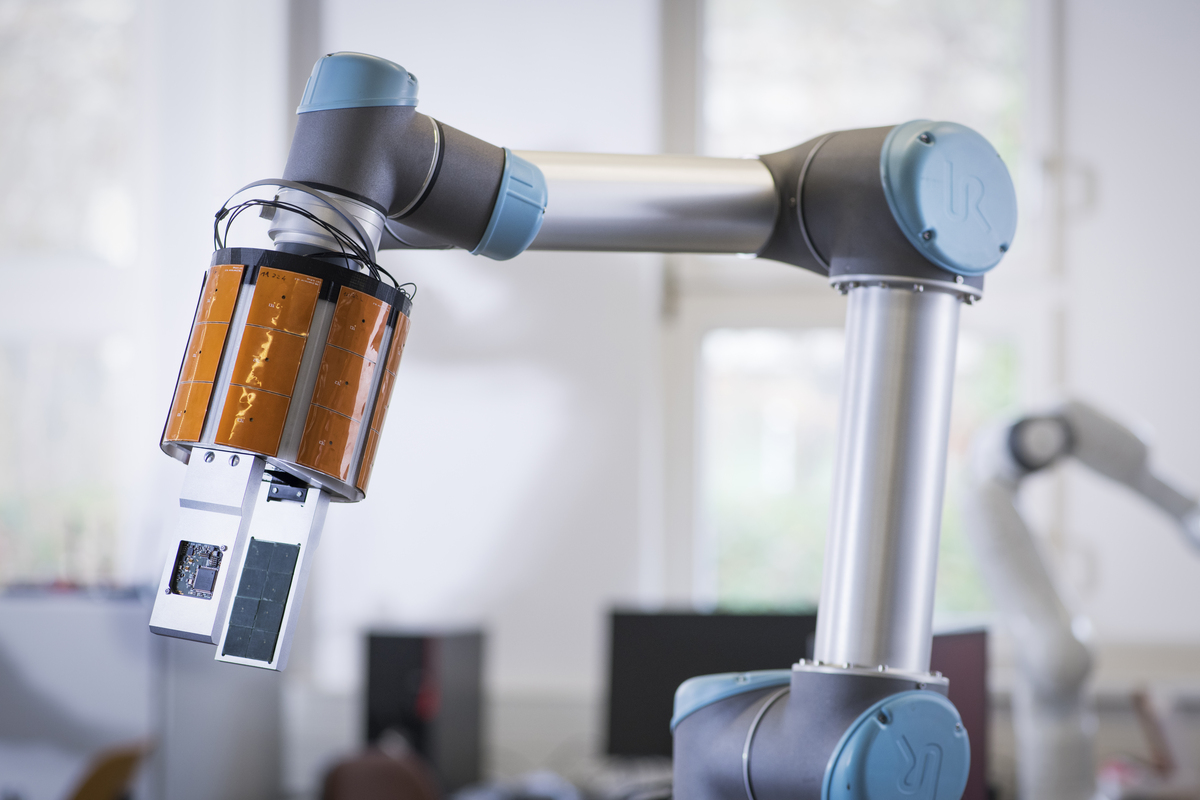KIT at Hannover Messe 2018
Intelligent sensors for human-robot collaboration, a flexible test lab for the future power grid, innovative energy storage systems and electric motors: These are some of the research activities presented by Karlsruhe Institute of Technology (KIT) at Hannover Messe 2018 with this year’s lead theme “Integrated Industry – Connect & Collaborate.” From April 23 to 27, 2018, KIT will present its work at two leading trade shows again: At “Research & Technology” (hall 2, stand B16) and at “Energy” (hall 27, stand K51).
- The topics of KIT at "Research & Technology"
- The topics of KIT at "Energy"
Further Information
- Press Release of KIT about Hannonver Messe
- Magazine lookKIT - current issue: the future working life
- KIT.audio - Podcast (german) - current episode: the future working life
The multimodal sensor technology for industrial robots will be presented at the Highlight Tour for the media on April 22nd, starting at noon.
CTPS: Multimodal Sensor Technology for Industrial Robots
Intelligent robots perceive their environment and react to it. For this, they need sensors that simultaneously detect different physical events. However, sensors that have been applied in arms and grippers of robots so far are mostly limited to one function: They perceive movements either by an approaching object or by contact in the form of pressure. KIT researchers have developed multimodal sensors that detect both simultaneously and, thus, ideally complement optical systems, such as cameras. With such capacitive tactile proximity sensors (CTPS), flexibility and agility of automated industrial production can be increased considerably, safety is enhanced. The sensors are able to detect approaching persons even when cameras are hidden or affected by unfavorable light conditions. As soon as a predefined safety distance is exceeded, they trigger warnings or reduce the speed of the robot. Hence, the CTPS can make an important contribution to safe human-robot collaboration when humans and robots work on the same workpiece at the same time.
Video (in german):
Further information
KIT at Other Stands
Joint BIOKON Stand A01 in Hall 2: The Body Language of Components
KIT presents innovative methods for lightweight construction and optimization of technical components. These methods have been derived from natural structures, based on Professor Claus Mattheck’s latest book “Pauli Explains the Form in Nature.”
FZI Stand B01 in Hall 2: New Robotics Solutions and Networked Driving
The Research Center for Information Technology (FZI) of KIT presents complex robot applications that can be programmed easily and quickly. In addition, the Baden-Württemberg Test Area for Autonomous Driving and a system for manipulated communication between vehicles will be displayed.
VDI-Gemeinschaftsstand C40, Halle 2: Automatic Exposure System
The fully automatic exposure system presented is used to study the impacts of fine dust on health. The system is suited for examining in vitro the effect of fine dust on human lung cells. Aerosols are applied to human lung cells in a reproducible and controllable manner.
Young Tech Enterprises, Hall 17, Stand B74: Startup Teams of KIT Present Themselves
The “Young Tech Enterprises” park gives the dynamic high-tech startup scene a platform to present itself. On all days, startup projects and spinoffs of KIT will introduce themselves: Carol Innovation, µyPrint (Monday, April 23); Knowtion UG, ReTest GmbH (Tuesday, April 24); Heisenberg, Usertimes (Wednesday, April 25); Smartivate, robodev (Thursday, April 26), robodev (Friday, April 27). More information is given at http://www.hannovermesse.de/de/rahmenprogramm/specials/young-tech-enterprises/

